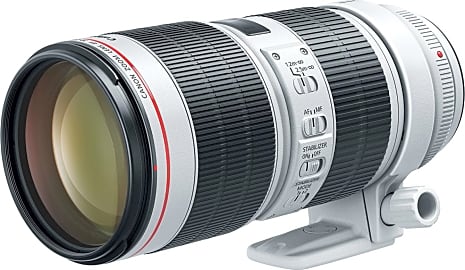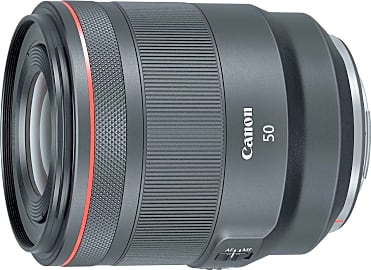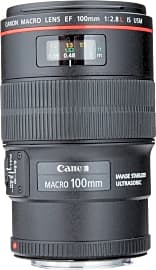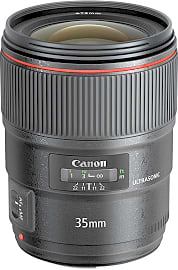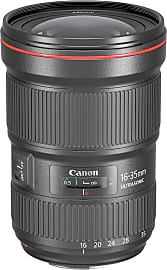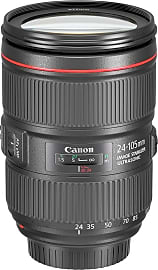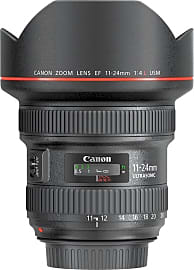The 10 Best Canon Lenses

This wiki has been updated 38 times since it was first published in May of 2015. For any photographer, the lens will make a bigger difference in the quality of their images than any other physical variable in their kit. A bad one can ruin an otherwise excellent photograph by gathering too little light or failing to focus accurately. A good one, however, can take your pictures to new heights. For Canon shooters, we've assembled a list of the best glass the company has to offer. When users buy our independently chosen editorial recommendations, we may earn commissions to help fund the Wiki.
Editor's Notes
March 29, 2019:
Two important additions to this iteration of our list came with the release of Canon's EOS R mirrorless system, and both prove to be slightly smaller versions of the EF counterparts that have undeniably earned their status as L lenses. To make room for these, we sent a pair of glass pieces packing: the old 50mm that was a reliable option, but had gotten awfully long in the tooth, and the tilt shift lens, which proved to be too much of a niche option to continue existing in our top 10. In exciting news for EF shooters, the company upgraded their 70-200mm 2.8 with improved image stabilization and an even quieter motor than before.
Battle Of The Brands
If you’re reading this, then there’s a good chance you chose Canon, seeing as how their lenses are the only ones that populate our list here.
While a handful of players have made splashes in the realms of photography and videography in recent years, many of those gains are in specialized sub-sectors of the industry. Action cams, for example, have filled a hole in the market that was calling for smaller, more rugged cameras capable of capturing video in a plethora of unforgiving environments. Mirrorless systems, on the other hand, have given street shooters a quiet and inconspicuous means of capturing high-quality images. They've also proven to have the potential to become very serious video options, and as of late 2018, Canon has officially thrown their hat in the ring with a pair of full-frame mirrorless bodies.
If you want to capture the best possible stills and video that your camera can provide, and you want to do so while exclusively using lenses made for that system, you still have to choose between Nikon and Canon. If you’re reading this, then there’s a good chance you chose Canon, seeing as how their lenses are the only ones that populate our list here. It turns out you chose wisely, as Nikon, while a significant competitor against Canon when comparing stills, can’t match them for video, meaning that you invested in a more comprehensive system.
Most shooters, though, whether they start out with Canon, Nikon, or another brand entirely, will begin their shooting careers with what are commonly called kit lenses. A kit lens is like a belt that comes with a pair of pants. You’re not entirely sure why the company gave it to you — apparently for free — but it holds the pants up, so you’ll use it for now. It turns out that the problem with a free belt is much the same as one of the problems with a free lens: it just doesn’t look that good.
Kit lenses are often short zooms made as cheaply as the manufacturer can make them without seeming too much like a jerk. The images they help you capture will immediately seem better than what your point-and-shoot camera or your phone could grab, but that’s mainly because of the better sensor and processing power built into most modern interchangeable lens cameras. If you want to take your photo game to the next level, you’re going to have to upgrade from that inferior glass.
Remember The Crop Factor
If you’re unfamiliar with the term, crop factor has less to do with how much of your cornfields you can spare to build a baseball field capable of resurrecting the ghosts of long-dead ball players than it does with the amount of light a lens is intended to direct onto your camera’s sensor. It’s called the crop factor because it refers to the amount of an image that gets cropped out when the certain lenses go on certain cameras. Fortunately for all of us, this is pretty simple when you get down to it.
If you take a top-tier 50mm prime lens designed for one of Canon’s full-frame bodies and you place it there, you’ll get a focal length of 50mm.
The majority of the best DSLR lenses in the world (i.e., the ones on our list) are intended for cameras with full-frame sensors. Most affordable entry-level and prosumer DSLRs, however, utilize APS-C sensors, which are just a bit smaller than full-frame. Canon and Nikon are both kind enough to keep the lens mounts on both kinds of their cameras exactly the same, meaning that you can purchase their best glass and still use it on a high-quality camera that just happens to have a smaller sensor. In this situation, the crop factor is the only caveat, and it works like this: multiply all of your focal lengths by 1.6. It’s that simple.
If you take a top-tier 50mm prime lens designed for one of Canon’s full-frame bodies and you place it there, you’ll get a focal length of 50mm. That same lens on an APS-C body will give you an apparent focal length of 80mm. A telephoto lens with a 200mm reach on a full-frame body will give you a 320mm reach on an APS-C body.
More often than not, this actually serves you better, as you can more easily see farther without having to tote around enormous supertelephoto glass. It gets a little hairier when shopping for wider lenses, however. If you want to shoot at 24mm on an APS-C body, you’re going to need a 16mm lens, which isn’t so easy to come by, and shooting wider than that is liable to give you a fair amount of barrel distortion, also called the fisheye effect.
Tips To Care For Your Glass
Lenses are probably the most important part of any camera package. They also happen to be among the most vulnerable. Small disruptions in the mechanics of a lens can be utterly destructive to their functioning. Inside the simplest of these lenses is a whole mess of hardware that communicates with your camera to meter and autofocus in milliseconds.
Finally, keep your lenses stored in some form of bag and clean them often.
In order to keep your lens functioning as well as possible, you need to make a few investments and develop a few habits. For starters, buy a filter. It shouldn’t have any effect on the image (other than glare reduction). It’s just a simple UV filter. When your camera drops, it’s often the front of the lens that hits the ground first, and if there’s an extra piece of glass there to absorb the damage, you’ll be grateful you made the choice to put it there.
Get some proper lens cleaner and an army of microfiber cloths, as well. When you don’t have microfiber and you get a smudge on your lens, you’re liable to use your shirt or some other material that’s simply too abrasive for the health of the glass. Microfiber is safe, cheap, and effective.
When carrying your lenses in a camera bag, keep the back elements facing the ground. There is a larger back cap against the lens than the one in the front, and that will help keep the shock of putting it down over and over at a minimum.
Finally, keep your lenses stored in some form of bag and clean them often. Once dust or mold makes its way inside a good lens, it’s game over. It can be cheaper to spend hundreds of dollars getting a lens professionally cleaned than it is to replace it, but either scenario is easily avoidable with a little care and conscientiousness.



